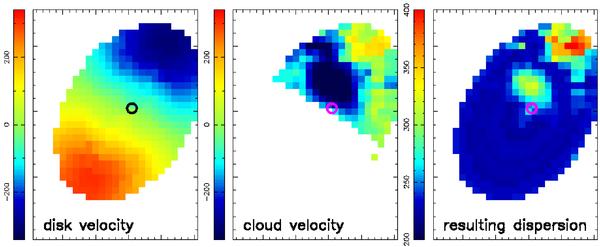Fig. 12

Southern Nucleus: resulting apparent dispersion of the superposition of a “disc” population and a “cloud-crushing” population, both with velocity dispersions of 220 km s-1. Left to right: disc velocity field, cloud population velocity field, resulting apparent dispersion. Black circles indicate BH positions. The right panel shows that a simple “disc plus cloud” model can produce an increase in dispersion, characteristic of that observed (Fig. 4). This indicates that the high dispersion in the northern half of the southern nucleus may be an artifact due to the presence of two kinematically different stellar populations with similar luminosities.
Current usage metrics show cumulative count of Article Views (full-text article views including HTML views, PDF and ePub downloads, according to the available data) and Abstracts Views on Vision4Press platform.
Data correspond to usage on the plateform after 2015. The current usage metrics is available 48-96 hours after online publication and is updated daily on week days.
Initial download of the metrics may take a while.


